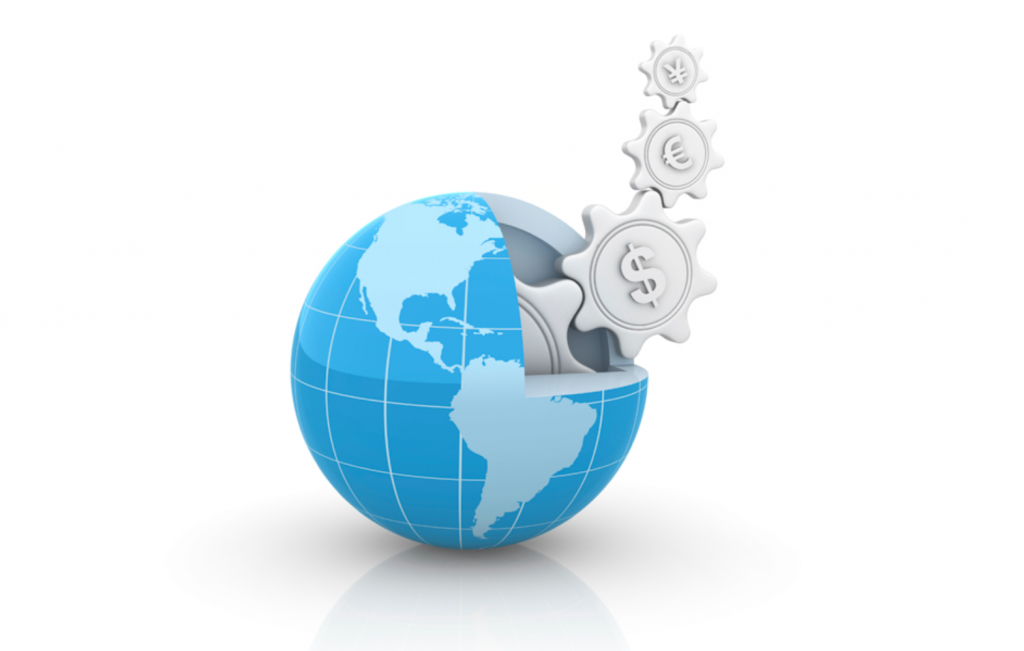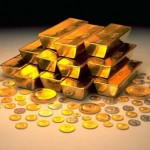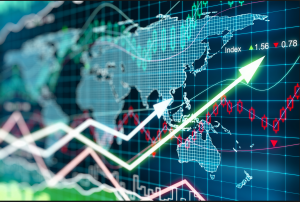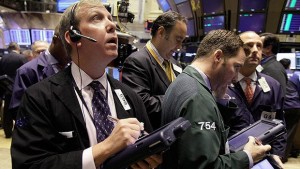Day trading refers to the practice of buying and selling financial instruments within the same trading day such that all positions are usually closed before the market close for the trading day. Traders that participate in day trading are called active traders or day traders.
Not widely known, the correct definition of an “intra-day” means the move as measured from the previous close and not just relative to another price traded on the same day.
Some of the more commonly day-traded financial instruments are stocks, stock options, currencies, and a host of futures contracts such as equity index futures, interest rate futures, and commodity futures.
Day trading used to be activity exclusive to financial firms and professional investors and speculators. Indeed, many day traders are bank or investment firm employees working as specialists in equity investment and fund management. However, with the advent of electronic trading and margin trading, day trading has become increasingly popular among at-home traders.
Trade frequency
Although collectively called day trading, there are many styles with specific qualities and risks. Scalping is an intra-day technique that usually has the trader holding a position for a few minutes. Shaving is a method which allows the trader to jump ahead by a tenth of a cent, and a full round trip (a buy and a sell order) is often completed in under one second. Instead of bidding $10.20 per share, the scalper will jump the bid at $10.201, thus becoming the best bid and therefore the first in line to be able to purchase the stock. When the best “Offer” is $10.21, the shaver will again jump first in line and sell a tenth of a cent cheaper at $10.209 for a profit of 0.008 of a dollar. The profits add up when using 10,000 share lots each time and the combined earnings from Rebates (read below) for creating liquidity. A day trader is actively searching for potential trading setups (that is, any stock or other financial instruments that, in the judgment of the day trader, is in a tension state, ready to accelerate in price in either direction, that when traded well has a potential for a substantial profit). The number of trades one can make per day is almost unlimited, as are the profits and losses.
Some day traders focus on very short-term trading within the trading day, in which a trade may last just a few minutes. Day traders may buy and sell many times in a trading day and may receive trading fee discounts from their broker for this trading volume.
Some day traders focus only on price momentum, others on technical patterns, and still others on an unlimited number of strategies they feel can be profitable.
Most day traders exit positions before the market closes to avoid unmanageable risks—negative price gaps (differences between the previous day’s close and the next day’s open bull price) at the open—overnight price movements against the position held. Other traders believe they should let the profits run, so it is acceptable to stay with a position after the market closes.
Day traders sometimes borrow money to trade. This is called margin trading. Since margin interests are typically only charged on overnight balances, the trader pays no fees for the margin benefit, though still running the risk of a Margin call. The margin interest rate is usually based on the Broker’s call.
Profit and risks
Because of the nature of financial leverage and the rapid returns that are possible, day trading can be either extremely profitable or extremely unprofitable, and high-risk profile traders can generate either huge percentage returns or huge percentage losses. Because of the high profits (and losses) that day trading makes possible, these traders are sometimes portrayed as “bandits” or “gamblers” by other investors. Some individuals, however, make a consistent living from day trading.
Nevertheless day trading can be very risky, especially if any of the following is present while trading:
- trading a loser’s game/system rather than a game that’s at least winnable,
- trading with poor discipline (ignoring your own day trading strategy, tactics, rules),
- inadequate risk capital with the accompanying excess stress of having to “survive”,
- incompetent money management (i.e. executing trades poorly).
The common use of buying on margin (using borrowed funds) amplifies gains and losses, such that substantial losses or gains can occur in a very short period of time. In addition, brokers usually allow bigger margins for day traders. Where overnight margins required to hold a stock position are normally 50% of the stock’s value, many brokers allow pattern day trader accounts to use levels as low as 25% for intraday purchases. This means a day trader with the legal minimum $25,000 in his or her account can buy $100,000 (4x leverage) worth of stock during the day, as long as half of those positions are exited before the market close. Because of the high risk of margin use, and of other day trading practices, a day trader will often have to exit a losing position very quickly, in order to prevent a greater, unacceptable loss, or even a disastrous loss, much larger than his or her original investment, or even larger than his or her total assets.
History
Originally, the most important U.S. stocks were traded on the New York Stock Exchange. A trader would contact a stockbroker, who would relay the order to a specialist on the floor of the NYSE. These specialists would each make markets in only a handful of stocks. The specialist would match the purchaser with another broker’s seller; write up physical tickets that, once processed, would effectively transfer the stock; and relay the information back to both brokers. Brokerage commissions were fixed at 1% of the amount of the trade, i.e. to purchase $10,000 worth of stock cost the buyer $100 in commissions. (Meaning that to profit trades had to make over 1% to make any real gain.)
One of the first steps to make day trading of shares potentially profitable was the change in the commission scheme. In 1975, the United States Securities and Exchange Commission (SEC) made fixed commission rates illegal, giving rise to discount brokers offering much reduced commission rates.
Financial settlement
Financial settlement periods used to be much longer: Before the early 1990s at the London Stock Exchange, for example, stock could be paid for up to 10 working days after it was bought, allowing traders to buy (or sell) shares at the beginning of a settlement period only to sell (or buy) them before the end of the period hoping for a rise in price. This activity was identical to modern day trading, but for the longer duration of the settlement period. But today, to reduce market risk, the settlement period is typically three working days. Reducing the settlement period reduces the likelihood of default, but was impossible before the advent of electronic ownership transfer.
Electronic communication networks
The systems by which stocks are traded have also evolved, the second half of the twentieth century having seen the advent of electronic communication networks (ECNs). These are essentially large proprietary computer networks on which brokers could list a certain amount of securities to sell at a certain price (the asking price or “ask”) or offer to buy a certain amount of securities at a certain price (the “bid”).
ECNs and exchanges are usually known to traders by a three- or four-letter designators, which identify the ECN or exchange on Level II stock screens. The first of these was Instinet (or “inet”), which was founded in 1969 as a way for major institutions to bypass the increasingly cumbersome and expensive NYSE, also allowing them to trade during hours when the exchanges were closed. Early ECNs such as Instinet were very unfriendly to small investors, because they tended to give large institutions better prices than were available to the public. This resulted in a fragmented and sometimes illiquid market.
The next important step in facilitating day trading was the founding in 1971 of NASDAQ—a virtual stock exchange on which orders were transmitted electronically. Moving from paper share certificates and written share registers to “dematerialized” shares, computerized trading and registration required not only extensive changes to legislation but also the development of the necessary technology: online and real time systems rather than batch; electronic communications rather than the postal service, telex or the physical shipment of computer tapes, and the development of secure cryptographic algorithms.
These developments heralded the appearance of “market makers”: the NASDAQ equivalent of a NYSE specialist. A market maker has an inventory of stocks to buy and sell, and simultaneously offers to buy and sell the same stock. Obviously, it will offer to sell stock at a higher price than the price at which it offers to buy. This difference is known as the “spread”. The market maker is indifferent as to whether the stock goes up or down, it simply tries to constantly buy for less than it sells. A persistent trend in one direction will result in a loss for the market maker, but the strategy is overall positive (otherwise they would exit the business). Today there are about 500 firms who participate as market-makers on ECNs, each generally making a market in four to forty different stocks. Without any legal obligations, market-makers were free to offer smaller spreads on ECNs than on the NASDAQ. A small investor might have to pay a $0.25 spread (e.g. he might have to pay $10.50 to buy a share of stock but could only get $10.25 for selling it), while an institution would only pay a $0.05 spread (buying at $10.40 and selling at $10.35).
Technology bubble (1997–2000)
In 1997, the SEC adopted “Order Handling Rules” which required market-makers to publish their best bid and ask on the NASDAQ. Another reform made during this period was the “Small Order Execution System”, or “SOES”, which required market makers to buy or sell, immediately, small orders (up to 1000 shares) at the market-makers listed bid or ask. A defect in the system gave rise to arbitrage by a small group of traders known as the “SOES bandits”, who made fortunes buying and selling small orders to market makers.
The existing ECNs began to offer their services to small investors. New brokerage firms which specialized in serving online traders who wanted to trade on the ECNs emerged. New ECNs also arose, most importantly Archipelago (“arca”) and Island (“isld”). Archipelago eventually became a stock exchange and in 2005 was purchased by the NYSE. (At this time, the NYSE has proposed merging Archipelago with itself, although some resistance has arisen from NYSE members.) Commissions plummeted. To give an extreme example (trading 1000 shares of Google), an online trader in 2005 might have bought $300,000 of stock at a commission of about $10, compared to the $3,000 commission the trader would have paid in 1974. Moreover, the trader was able in 2005 to buy the stock almost instantly and got it at a cheaper price.
ECNs are in constant flux. New ones are formed, while existing ones are bought or merged. As of the end of 2006, the most important ECNs to the individual trader were:
- Instinet (which bought Island in 2002),
- Archipelago (although technically it is now an exchange rather than an ECN),
- the Brass Utility (“brut”), and
- the SuperDot electronic system now used by the NYSE.
This combination of factors has made day trading in stocks and stock derivatives (such as ETFs) possible. The low commission rates allow an individual or small firm to make a large number of trades during a single day. The liquidity and small spreads provided by ECNs allow an individual to make near-instantaneous trades and to get favorable pricing. High-volume issues such as Intel or Microsoft generally have a spread of only $0.01, so the price only needs to move a few pennies for the trader to cover his commission costs and show a profit.
The ability for individuals to day trade coincided with the extreme bull market in technological issues from 1997 to early 2000, known as the Dot-com bubble. From 1997 to 2000, the NASDAQ rose from 1200 to 5000. Many naive investors with little market experience made huge profits buying these stocks in the morning and selling them in the afternoon, at 400% margin rates.
Adding to the day-trading frenzy were the enormous profits made by the “SOES bandits” who, unlike the new day traders, were highly-experienced professional traders able to exploit the arbitrage opportunity created by SOES.
In March, 2000, this bubble burst, and a large number of less-experienced day traders began to lose money as fast, or faster, than they had made during the buying frenzy. The NASDAQ crashed from 5000 back to 1200; many of the less-experienced traders went broke, although obviously it was possible to have made a fortune during that time by shorting or playing on volatility.
Techniques
The following are several basic strategies by which day traders attempt to make profits. Besides these, some day traders also use contrarian (reverse) strategies (more commonly seen in algorithmic trading) to trade specifically against irrational behavior from day traders using these approaches.
Some of these approaches require shorting stocks instead of buying them: the trader borrows stock from his broker and sells the borrowed stock, hoping that the price will fall and he will be able to purchase the shares at a lower price. There are several technical problems with short sales—the broker may not have shares to lend in a specific issue, some short sales can only be made if the stock price or bid has just risen (known as an “uptick”), and the broker can call for the return of its shares at any time. Some of these restrictions (in particular the uptick rule) don’t apply to trades of stocks that are actually shares of an exchange-traded fund (ETF).
The Securities and Exchange Commission removed the uptick requirement for short sales on July 6, 2007.
From Wikipedia, the free encyclopedia






